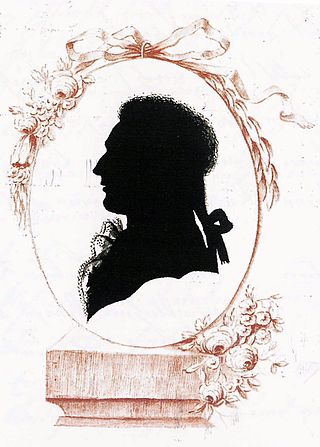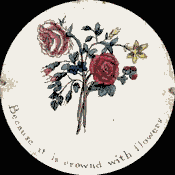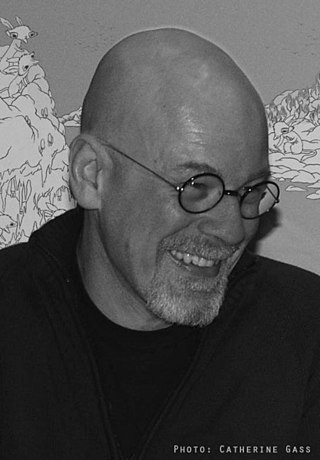Related Research Articles

Ḥasan Ibn al-Haytham was a medieval mathematician, astronomer, and physicist of the Islamic Golden Age from present-day Iraq. Referred to as "the father of modern optics", he made significant contributions to the principles of optics and visual perception in particular. His most influential work is titled Kitāb al-Manāẓir, written during 1011–1021, which survived in a Latin edition. The works of Alhazen were frequently cited during the scientific revolution by Isaac Newton, Johannes Kepler, Christiaan Huygens, and Galileo Galilei.

Abū Mūsā Jābir ibn Ḥayyān, died c. 806−816, is the purported author of a large number of works in Arabic, often called the Jabirian corpus. The c. 215 treatises that survive today mainly deal with alchemy and chemistry, magic, and Shi'ite religious philosophy. However, the original scope of the corpus was vast, covering a wide range of topics ranging from cosmology, astronomy and astrology, over medicine, pharmacology, zoology and botany, to metaphysics, logic, and grammar.

Islamic philosophy is philosophy that emerges from the Islamic tradition. Two terms traditionally used in the Islamic world are sometimes translated as philosophy—falsafa, which refers to philosophy as well as logic, mathematics, and physics; and Kalam, which refers to a rationalist form of Scholastic Islamic theology which includes the schools of Maturidiyah, Ashaira and Mu'tazila.
Early Islamic philosophy or classical Islamic philosophy is a period of intense philosophical development beginning in the 2nd century AH of the Islamic calendar and lasting until the 6th century AH. The period is known as the Islamic Golden Age, and the achievements of this period had a crucial influence in the development of modern philosophy and science. For Renaissance Europe, "Muslim maritime, agricultural, and technological innovations, as well as much East Asian technology via the Muslim world, made their way to western Europe in one of the largest technology transfers in world history." This period starts with al-Kindi in the 9th century and ends with Averroes at the end of 12th century. The death of Averroes effectively marks the end of a particular discipline of Islamic philosophy usually called the Peripatetic Arabic School, and philosophical activity declined significantly in Western Islamic countries, namely in Islamic Spain and North Africa, though it persisted for much longer in the Eastern countries, in particular Persia and India where several schools of philosophy continued to flourish: Avicennism, Illuminationist philosophy, Mystical philosophy, and Transcendent theosophy.
Arabic literature is the writing, both as prose and poetry, produced by writers in the Arabic language. The Arabic word used for literature is Adab, which comes from a meaning of etiquette, and which implies politeness, culture and enrichment.

The maqāma is an (originally) Arabic prosimetric literary genre of picaresque short stories originating in the tenth century C.E. The maqāmāt are anecdotes told by a fictitious narrator which typically follow the escapades of a roguish protagonist as the two repeatedly encounter each other in their travels. The genre is known for its literary and rhetorical complexity, as well as its alternating use of rhymed verse with a form of Arabic rhymed prose known as saj'. The two most well-known authors within the genre are Badī' al-Zaman al-Hamadhāni, one of its earliest exponents, and al-Harīrī of Basra, whose maqāmāt are commonly held responsible for the genre's rise in popularity from the eleventh century onward. Interest in al-Hariri's Maqāmāt spread throughout much of the Islamic Empire, with translations and original works appearing in Hebrew, Syriac and Persian. Many authors still contribute to and draw inspiration from the literary genre of Maqāma to this day.

A silhouette is the image of a person, animal, object or scene represented as a solid shape of a single colour, usually black, with its edges matching the outline of the subject. The interior of a silhouette is featureless, and the silhouette is usually presented on a light background, usually white, or none at all. The silhouette differs from an outline, which depicts the edge of an object in a linear form, while a silhouette appears as a solid shape. Silhouette images may be created in any visual artistic medium, but were first used to describe pieces of cut paper, which were then stuck to a backing in a contrasting colour, and often framed.

A thaumatrope is an optical toy that was popular in the 19th century. A disk with a picture on each side is attached to two pieces of string. When the strings are twirled quickly between the fingers the two pictures appear to blend into one. The toy has traditionally been thought to demonstrate the principle of persistence of vision, a disputed explanation for the cause of illusory motion in stroboscopic animation and film.

Shadow play, also known as shadow puppetry, is an ancient form of storytelling and entertainment which uses flat articulated cut-out figures which are held between a source of light and a translucent screen or scrim. The cut-out shapes of the puppets sometimes include translucent color or other types of detailing. Various effects can be achieved by moving both the puppets and the light source. A skilled puppeteer can make the figures appear to walk, dance, fight, nod and laugh.
Early Islamic law placed importance on formulating standards of argument, which gave rise to a "novel approach to logic" in Kalam . However, with the rise of the Mu'tazili philosophers, who highly valued Aristotle's Organon, this approach was displaced by the older ideas from Hellenistic philosophy. The works of al-Farabi, Avicenna, al-Ghazali and other Muslim logicians who often criticized and corrected Aristotelian logic and introduced their own forms of logic, also played a central role in the subsequent development of European logic during the Renaissance.

John Ayrton Paris, FRS was a British physician. He is a possible inventor of the thaumatrope, which he published with W. Phillips in April 1825.
The Fornacalia was an Ancient Roman religious festival celebrated in honor of the goddess Fornax, a divine personification of the oven (fornax), and was related to the proper baking of bread.

Literature is any collection of written work, but it is also used more narrowly for writings specifically considered to be an art form, especially novels, plays, and poems. It includes both print and digital writing. In recent centuries, the definition has expanded to include oral literature, much of which has been transcribed. Literature is a method of recording, preserving, and transmitting knowledge and entertainment. It can also have a social, psychological, spiritual, or political role.

Syrian literature is modern fiction written or orally performed in Arabic by writers from Syria since the independence of the Syrian Arab Republic in 1946. It is part of the historically and geographically wider Arabic literature. Literary works by Syrian authors in the historical region of Syria since the Umayyad era are considered general Arabic literature. In its historical development since the beginnings of compilations of the Quran in the 7th century and later written records, the Arabic language has been considered a geographically comprehensive, standardized written language due to the religious or literary works written in classical Arabic. This sometimes differs considerably from the individual regionally spoken variants, such as Syrian, Egyptian or Moroccan spoken forms of Arabic.
Robert Dunkin (1761–1831), of Penzance, Cornwall, was a Quaker businessman and a mentor of the young Humphry Davy, a founder of the science of electrochemistry, in the practice of experimental science.

Steve Tomasula is an American novelist, critic, short story, and essay author known for cross-genre narratives that explore conceptions of the self, especially as shaped by language and technology.
For the history of animation after the development of celluloid film, see history of animation.
Events in 1867 in animation.
Events in 1864 in animation.
Events in 1855 in animation.
References
- ↑ Meisami, J.S.; Starkey, Paul (1998). Encyclopedia of Arabic Literature. Vol. 1. Routledge. pp. 54–56. ISBN 0415185718.
- ↑ Qian, A. (2012). The Maqāmah as Prosimetrum: A Comparative Investigation of its Origin, Form and Function [Unpublished doctoral dissertation]. University of Pennsylvania.
- ↑ Omri, Mohamed-Salah (2008). "Local Narrative Form and Construction of the Arabic Novel". Novel: A Forum on Fiction. 41 (2/3): 244–263. doi:10.1215/ddnov.041020244. JSTOR 40267737.
- ↑ Roxburgh, David J. (2014-01-31). "In Pursuit of Shadows: Al-Hariri's Maqāmāt". Muqarnas Online. 30 (1): 171–212. doi:10.1163/22118993-0301P0009. ISSN 0732-2992.
- ↑ Jouvanceau, Pierre (2004). The Silhouette Film. Pagine di Chiavari. trans. Kitson. Genoa: Le Mani. ISBN 88-8012-299-1.
- ↑ Herbert, Stephen. "Wheel of Life – The Thaumatrope".
- ↑ Paris, John Ayrton (1827). Philosophy in Sport made Science in Earnest. Vol. 3. pp. 22–25.
- ↑ Paris, John Ayrton (1833). Philosophy in Sport made Science in Earnest (new ed.). Sherwood, Gilbert, & Piper. pp. 352–354.
philosophy in sport.